Bird Management? This might sound too technical for people out of the wildlife control profession. Compliance? That makes it more overwhelming. But here in Abra Kadabra, we want to inform and educate our customers on the necessary information that can be helpful. Imagine calling us, and when we discuss your issues on your property, you get to understand our lingo. We are that extra. Now, let’s take a deep dive into managing nuisance birds by putting the law above it.
What is Bird Management?
Bird Management is a crucial part of public health pest control. This refers to the practices used to control bird populations, behavior, and habitats to address issues on nuisance birds. Bird Management consists of methods and approaches depending on the target species and the problems they cause to properties. The areas include pest control, conservation, habitat management, urban bird management, airport bird control, agricultural bird control, and research. These methods include non-lethal techniques such as habitat modification, exclusion devices, and scare tactics.
Laws and Regulations Protecting Birds
If you’re dealing with a problem with nuisance birds, it is vital to understand the laws and regulations of protected birds to avoid any mishaps with the government.
Migratory Bird Treaty Act (MBTA)
According to NWCOA (National Wildlife Control Operators Association), The Migratory Bird Treaty Act refers to the “Federal prohibition to “pursue, hunt, take, capture, kill, attempt to take, capture or kill, possess, offer for sale, sell, offer to purchase, purchase, deliver for shipment, ship, cause to be shipped, at any time, any migratory bird, nest, or egg of any such bird.” (16 U.S.C. 703).
Endangered Species Act (ESA)
According to the U.S. Fish and Wildlife Service, The Endangered Species Act establishes protections for fish, wildlife, and plants that are listed as threatened or endangered; provides for adding species to and removing them from the list of threatened and endangered species, and for preparing and implementing plans for their recovery; provides for interagency cooperation to avoid take of listed species and for issuing permits for otherwise prohibited activities; provides for cooperation with States, including authorization of financial assistance; and implements the provisions of the Convention on International Trade in Endangered Species of Wild Flora and Fauna (CITES).
Legal Categories of Birds
History of Unprotected Birds

Passer domesticus
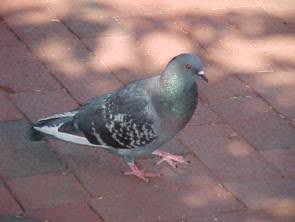
Columba Livia
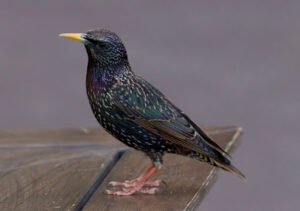
Sturnus vulgaris

Streptopelia decaocto
House sparrows are the smallest bird, with lengths ranging from 5 to 6½ inches, and weigh less than an ounce. Both genders have light brown coloring with streaks and gray on the breast and belly. Males, however, have a black throat bib flanked by white spots. Immature house sparrows will lack distinctive markings and appear to be females. Sparrow calls can be easily identified by the sharp and repetitive cheep. Mating occurs in March-April. Nests are messy, globular piles of grasses, string, paper, and twigs that fill the void or crevice where the nest was placed. Females lay between 3-9 eggs in a single clutch and can repeat this up to 5 times a year beginning in early April.
Unprotected Birds
- Pigeons
- House Sparrows
- Starlings
- Eurasian Collared-Dove
Protected Birds
- Everything else
- Limited protection for Black Birds
Typical Issues Caused by Birds
In our previous blog, we discussed bird deterrence methods, including how nuisance birds are causing problems in properties. This guide will provide you with a more technical approach to learning about the issues caused by nuisance birds.
Bird Droppings
Each year, Pigeons excrete 22-26 lbs of feces, which can clog roof drains. When dry, feces can weigh up to 40 lbs per cubic foot and compromise structures.
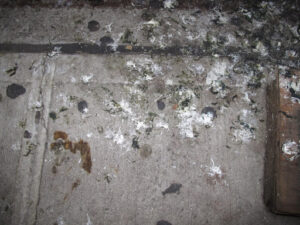
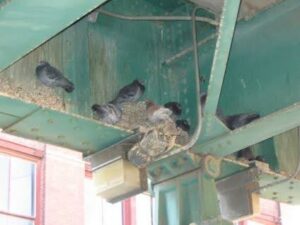
Diseases Caused by Bird Droppings
- Chlamydia psittaci – bacteria causing flu-like illness and pneumonia
- Campylobacter jejuni – bacteria causing diarrhea, fever, and malaise
- Cyrptococcosis – a fungus that can cause flu-like illness
Repeated exposure to bird droppings can cause an allergic reaction called the “Breeder’s Lung.”
How to Create a Bird Management Plan
Creating a bird management plan requires steps to ensure its effectiveness and human control of birds. Here are the steps to remember when creating a bird management plan.
Identify and Assess
If you are most likely dealing with a bird problem, the first step is to identify the specific issues, such as the causes of damage in your property and the health hazards. This includes survey and data collection by knowing the types of bird species present, their population, and behavior patterns.
Goal Setting
Why are you doing bird management in the first place? You should be able to know what are the results you are expecting when you create a bird management plan. This includes goals like bird population, how to mitigate damage, and protection of specific areas in your property.
Compliance in Check
This blog mostly focuses on compliance. When creating a bird management plan, you should ensure it complies with local, state, and federal wildlife protection laws. This involves acquiring specific permits and permissions for bird management activities.
Documentation
As a property owner, being attentive to details should be at the top of your priorities, as this helps avoid recurring issues. Know to review and update your bird management plans by incorporating new information, technologies, and strategies. Once you see the ineffectiveness of your plans, take action to adapt to new methods.
Effective Bird Deterrence Methods With Compliance in Mind
Let’s say you want to get rid of nuisance birds out of your way, but how do you ensure that you do it correctly, with all the compliance lists in check? With our busy lives, sometimes, we forget to invest in the right solutions and call professionals for help. We want to be in charge. But that’s the problem. Spending a little time with little knowledge can get you into further trouble. Now, let’s learn the ways how to effectively manage nuisance birds with compliance in mind.
Do I need a federal permit to destroy a bird’s nest?
According to the Nest Destruction Migratory Bird Permit Memorandum (MBPM-2; April 15, 2003), A permit is not needed to destroy inactive bird nests, provided the nest is destroyed and not kept. An inactive bird nest is one without eggs or chicks present. However, a permit is required to destroy an active bird nest (one with eggs or chicks present). Additionally, a permit is required to disturb or destroy nests of bald eagles, golden eagles, and federally threatened or endangered species.
Importance of Identification
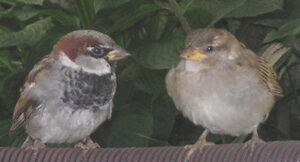
Unprotected Bird House Sparrow
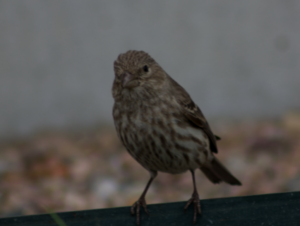
Protected Bird House Finch
Habitat Modification
The best way you should do as a property owner to reduce conditions attractive to birds is Habitat Modification. The first is to reduce food by stopping passive feeding and active feeding. Lastly, public education should be implemented in any workplace or household.
Don’t discount habitat modification because even small changes in the environment put stress on birds, which can enhance the effectiveness of more direct methods. Birds that are hungry and looking for shelter are more likely to leave, get trapped, or be shot.
Reduce Water Availability
Property owners should avoid standing water on roofs and air conditioner condensers and should regret ground with dripping faucets.
Secure Buildings
Windows, including screen vents, should be repaired. Ensure to install the right screen vents. In the U.S., 2,900 homes with 5 deaths, 100 injuries, and $35 million losses are caused by dryer fires. Failure to clean dryer vents leads to 34% of fire causes (U.S. Fire Administration, 2018). Having said that, you should use quality screens (stainless steel), secure screws against water, and use quality sealants.
When screening, you should avoid doing it on the inside. Though convenient, the animals can still break into the vent.
Trim or Remove Trees
Cut ⅓ of the branches to open up the canopy—dense canopies can attract flocking birds—and install a tree shock.
Frightening Devices
Use frightening devices before birds create a habitat on a site. You should use as diverse a set of tools as possible simultaneously. Note that using two or more frightening devices and killing a few birds can help to add realism to the devices.
How Abra Kadabra Environmental Services Can Help
Abra Kadabra has certified bird and zoonotic disease specialists who can assist your home or company in developing a comprehensive bird management program to address your particular concerns and limitations. We are a second-generation family-owned company with 20 years of experience. We are here to help and provide a warranty you can trust.
When your home is experiencing a wildlife problem, it is important to have the animals removed and the entry points sealed up (to prevent re-entry) before doing a thorough waste cleanup. At Abra Kadabra, we follow the National Wildlife Control Operator’s Association’s (NWCOA) 4-step inspecting, removing, monitoring, and repairing process. We always confirm the target species and identify the areas of activity and entry points, trap out the animals, and then exclude (wildlife-proof) the structure.
Once completed, we can remove, disinfect, or encapsulate contaminated materials to eliminate dangerous waste products and any pheromones marking prior entry points. Note that disinfectant can be used at the first appointment when the waste is in a high-danger area, such as a kitchen or child’s room.
Wrapping It Up
It’s easy to say that birds can’t be harmful, but as time goes by, their droppings can be a real threat to your property and health. That is why it’s important to be educated and know how to prevent issues from arising in the future. Always remember to assess, set goals, check legal requirements, know the right methods, and evaluate. That’s when you can possibly achieve the success of your bird management plan. Lastly, if your time is limited and you are busy. Calling the right pest and wildlife control professionals will save you time and money.

